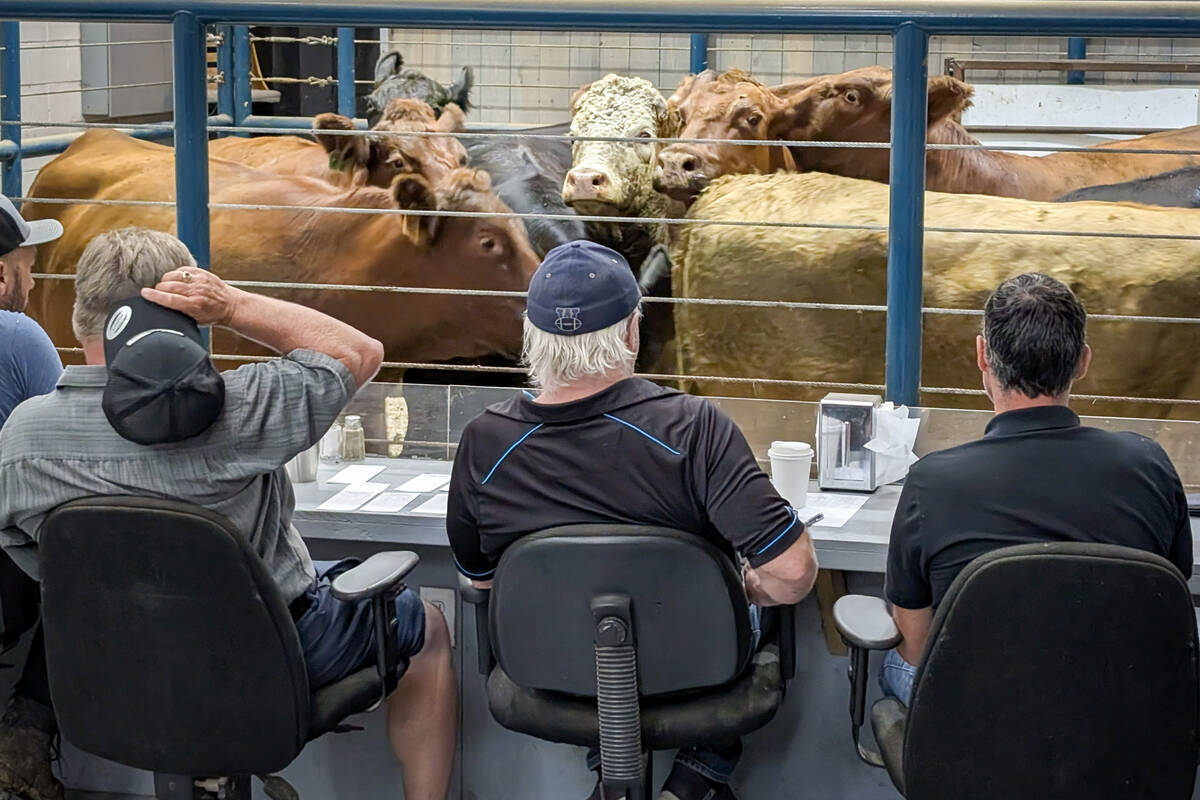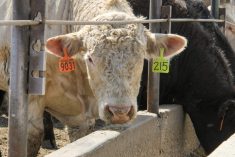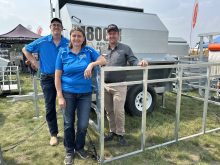Total mixed rations (TMR) are one way producers make sure that cattle are getting the best nutritive bang for the farmer’s buck. It helps make sure that every animal is getting their share, and no more, of the forages, grains, additives and other parts of the feed plan.
Typically though, its a technology more commonly applied on the dairy farm. Now though, that interest is spreading more onto beef farms and feedlots, and Ag in Motion attendees got a chance to compare and contrast models that they might want to add to their own equipment fleets.
Read Also

Klassen: Weaker fed market weighs on feeder cattle prices
For the week ending November 8, Western Canadian feeder cattle markets traded $10-$20/cwt below values from seven days earlier. Some…
Four companies, Penta Equipment, Jaylor, Highline and Trioliet, demonstrated their TMR mixers at the outdoor farm show. Event attendees watched as forage, silage and grains were dumped into each unit, processed and then sent out the conveyor in the form of feedable TMR. Attendees were then able to get a closer look at each result.
Glenn Buurma, president of Penta, said TMR mixers are a versatile product.
“Vertical feed mixers, if they’re set up correctly, every mouthful is the same,” he said. “And there’s really nothing that a vertical feed mixer will say no to.”
“We can go from the toughest hay to the nicest hay, we can go from big round bales … to big squares that are all falling apart,” Buurma added. “We can take a not-so-great bale and add it with a nicer bale and get a great ration. We can take corn stalks and add some wet feed … and have an awesome ration.”
Buurma has seen significant interest from the beef sector. In fact, he said, their list of beef customers is increasing more than their dairy buyers.
“There’s nothing that’s going to have a quicker payback for a beef farmer than a feed mixer,” he said.















